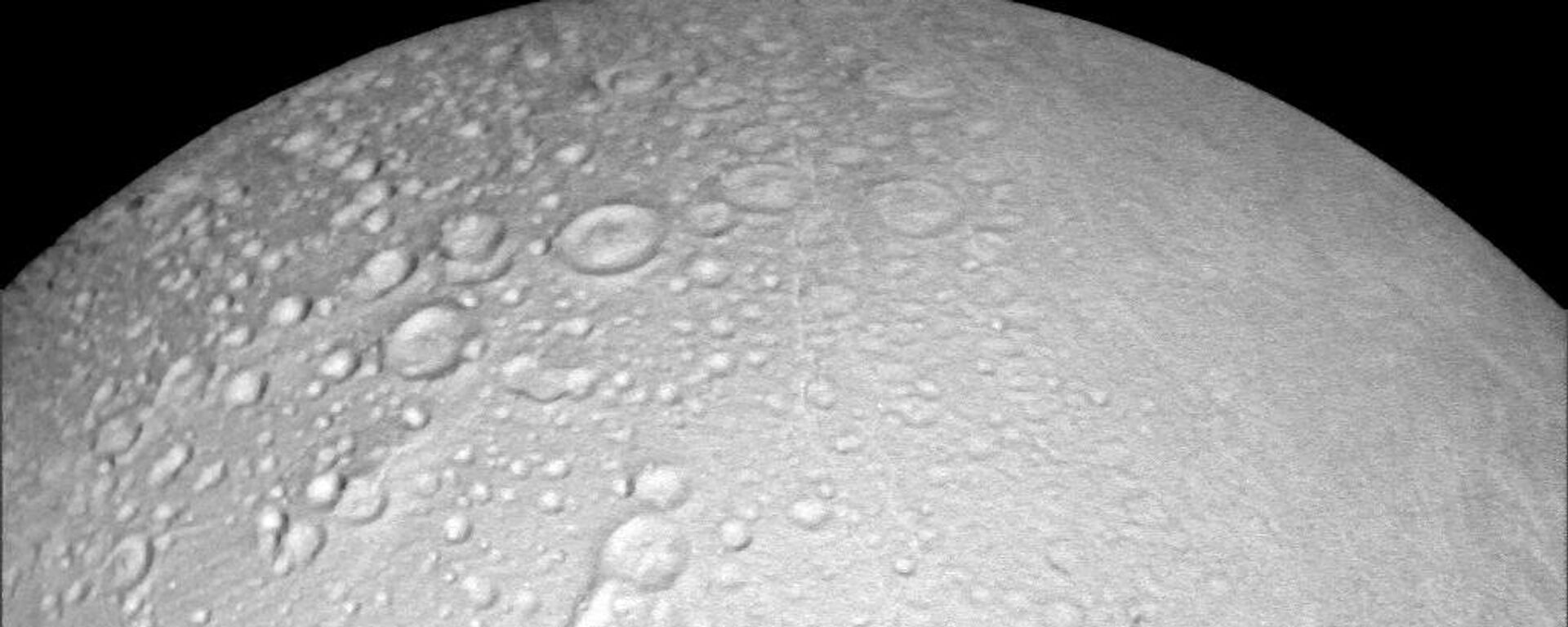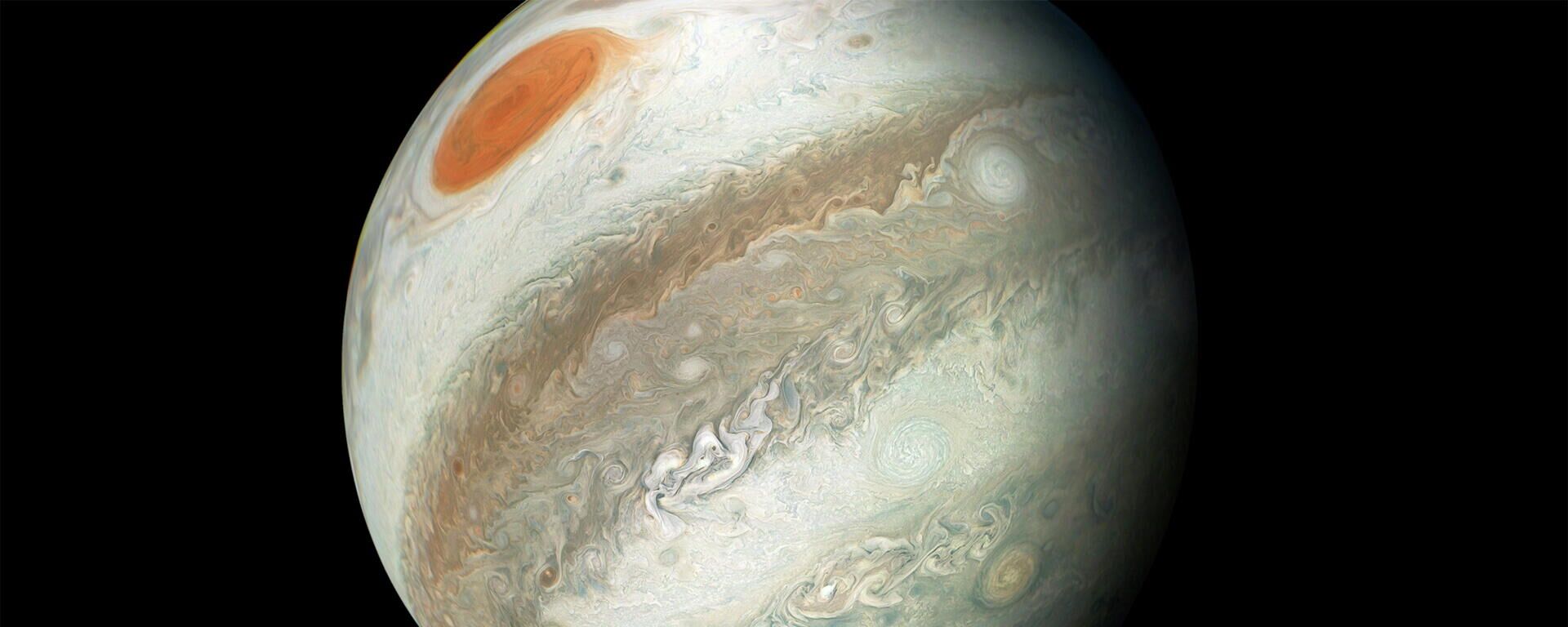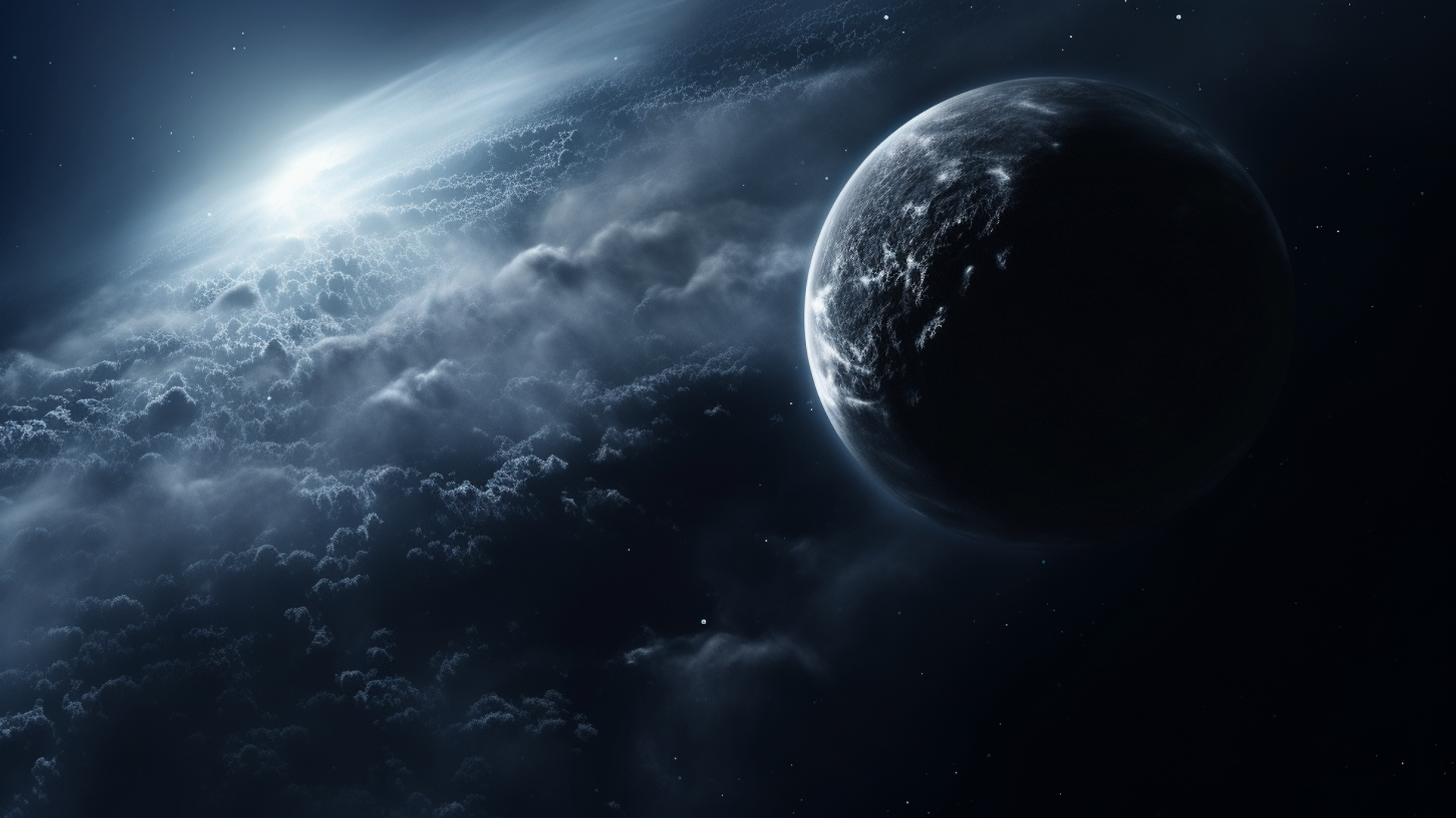https://sputnikglobe.com/20240428/scientists-find-strong-evidence-of-mysterious-planet-lurking-on-far-edges-of-our-solar-system-1118166328.html
Scientists Find ‘Strong Evidence’ of Mysterious Planet Lurking on Far Edges of Our Solar System
Scientists Find ‘Strong Evidence’ of Mysterious Planet Lurking on Far Edges of Our Solar System
Sputnik International
Up until about two decades ago when the International Astronomical Union downgraded Pluto’s status to a “dwarf planet,” the conventional wisdom was that our solar system has nine full-fledged planets. That may still be the case, researchers led by a Soviet-born California-based astronomer say.
2024-04-28T19:05+0000
2024-04-28T19:05+0000
2024-04-28T19:10+0000
beyond politics
konstantin batygin
science & tech
earth
pluto
international astronomical union
california institute of technology
https://cdn1.img.sputnikglobe.com/img/07e7/06/1c/1111514065_5:0:1456:816_1920x0_80_0_0_e4d9e549a8876261f5150259f904a0fd.png
There is evidence to suggest that a mystery hidden planet is lurking in our solar system and we don’t know it yet, says Dr. Konstantin Batygin, a professor of planetary science at the California Institute of Technology.Batygin, a Russian-American astronomer who helped popularize the theory that there may really be nine planets in our solar system (not counting dwarf planets like Pluto) in 2016 says his team’s latest theoretical research on the movement of Trans-Neptunian Objects, constitutes “the strongest statistical evidence yet that Planet 9 is really out there.”Batygin et al’s research, entitled ‘Generation of Low-Inclination, Neptune-Crossing TNOs by Planet Nine,” was submitted to arXiv last week, and is expected to be published in an upcoming issue of Astrophysical Journal Letters. The paper takes a closer look at TNOs with unstable movements caused by Neptune’s gravity.Researchers ran simulations “that self-consistently model gravitational perturbations from all giant plants, the Galactic tide, as well as passing stars, stemming from initial conditions that account for the primordial giant planet migration and [the] Sun’s early evolution within a star cluster.”In two sets of simulations – one assuming the existence of a ninth planet in the solar system, and another without it, astronomers found what Dr. Batygin and his colleagues believe may prove to be exciting evidence of the mystery ninth planet’s existence.Without the hidden ninth planet, the recorded movements of rogue TNOs would be unlikely, the researchers added, noting that their hypothesis was likely the best explanation to explaining the behavior of distant celestial objects in our solar system.Batygin and his colleagues expect to find more definitive proof on the existence (or lack thereof) of the mystery ninth planet when the new Vera C. Rubin Observatory constructed in Chile is up and running beginning in 2025.How Could We Have Missed a Whole Other Planet?As astronomers publish fascinating new research on planets light years (i.e. trillions of km) from Earth, and even galaxies tens of millions of light years from our small blue planet, the logical question to ask is how scientists could have missed a planet so much closer to home.The answer is twofold, according to Batygin and his colleagues’ analysis. Firstly, even within our solar system, spotting objects at its furthest reaches isn’t easy, given that they may be orbiting up to 500 times further away from the Sun than Earth is (Pluto, for comparison, is roughly 40 times the distance away). At these distances, deprived of the warm, assuring light that makes many other planets in the solar system visible, spotting the mystery planet or planets can be extremely difficult if not impossible without dedicated equipment. The second factor is the mystery potential ninth planet’s expected size, with computer modeling estimating its mass to be about five times that of Earth – an impossibly tiny speck for most Earth-based observations.
https://sputnikglobe.com/20240428/russia-studies-mysterious-ghost-particle-that-affects-whole-universe-1118163914.html
https://sputnikglobe.com/20240209/saturns-smallest-moon-mimas-hides-a-subterranean-ocean-1116697411.html
https://sputnikglobe.com/20231219/alien-hunting-astrophysicists-drop-catalog-of-earth-like-planets-with-jupiter-like-siblings-1115687336.html
earth
pluto
Sputnik International
feedback@sputniknews.com
+74956456601
MIA „Rossiya Segodnya“
2024
News
en_EN
Sputnik International
feedback@sputniknews.com
+74956456601
MIA „Rossiya Segodnya“
Sputnik International
feedback@sputniknews.com
+74956456601
MIA „Rossiya Segodnya“
how many planets are there, are there nine planets in the solar system after all
how many planets are there, are there nine planets in the solar system after all
Scientists Find ‘Strong Evidence’ of Mysterious Planet Lurking on Far Edges of Our Solar System
19:05 GMT 28.04.2024 (Updated: 19:10 GMT 28.04.2024) Up until about two decades ago, when the International Astronomical Union downgraded Pluto’s status to a “dwarf planet,” the conventional wisdom was that our solar system has nine full-fledged planets. That may still be the case, researchers led by a Soviet-born California-based astronomer say.
There is evidence to suggest that a mystery hidden planet is lurking in our solar system and we don’t know it yet, says Dr. Konstantin Batygin, a professor of planetary science at the California Institute of Technology.
Batygin, a Russian-American astronomer who helped popularize the theory that there may really be nine planets in our solar system (not counting dwarf planets like Pluto) in 2016 says his team’s latest theoretical research on the movement of Trans-Neptunian Objects, constitutes “the strongest statistical evidence yet that Planet 9 is really out there.”
Batygin et al’s
research, entitled ‘Generation of Low-Inclination, Neptune-Crossing TNOs by Planet Nine,” was submitted to arXiv last week, and is expected to be published in an upcoming issue of Astrophysical Journal Letters. The paper takes a closer look at TNOs with unstable movements caused by Neptune’s gravity.
Researchers ran simulations “that self-consistently model gravitational perturbations from all giant plants, the Galactic tide, as well as passing stars, stemming from initial conditions that account for the primordial giant planet migration and [the] Sun’s early evolution within a star cluster.”
In two sets of simulations – one assuming the existence of a ninth planet in the solar system, and another without it, astronomers found what Dr. Batygin and his colleagues believe may prove to be exciting evidence of the mystery ninth planet’s existence.
“Accounting for observational biases, our results reveal that the orbital architecture of this group of objects aligns closely with the predictions of the P9-inclusive model,” the paper indicated.
Without the hidden ninth planet, the recorded movements of rogue TNOs would be unlikely, the researchers added, noting that their hypothesis was likely the best explanation to explaining the behavior of distant celestial objects in our solar system.
Batygin and his colleagues expect to find more definitive proof on the existence (or lack thereof) of the mystery ninth planet when the new Vera C. Rubin Observatory constructed in Chile is up and running beginning in 2025.
“This upcoming phase of exploration promises to provide critical insights into the mysteries of our solar system’s outer reaches,” the paper noted, pointing to the exciting time ahead for astronomers worldwide.

9 February 2024, 15:52 GMT
How Could We Have Missed a Whole Other Planet?
As astronomers publish fascinating new research on planets light years (i.e. trillions of km)
from Earth, and even galaxies
tens of millions of light years from our small blue planet, the logical question to ask is how scientists could have missed a planet so much closer to home.
The answer is twofold, according to Batygin and his colleagues’ analysis. Firstly, even within our solar system, spotting objects at its furthest reaches isn’t easy, given that they may be orbiting up to 500 times further away from the Sun than Earth is (Pluto, for comparison, is roughly 40 times the distance away). At these distances, deprived of the warm, assuring light that makes many other planets in the solar system visible, spotting the mystery planet or planets can be extremely difficult if not impossible without dedicated equipment. The second factor is the mystery potential ninth planet’s expected size, with computer modeling estimating its mass to be about five times that of Earth – an impossibly tiny speck for most Earth-based observations.

19 December 2023, 22:32 GMT





